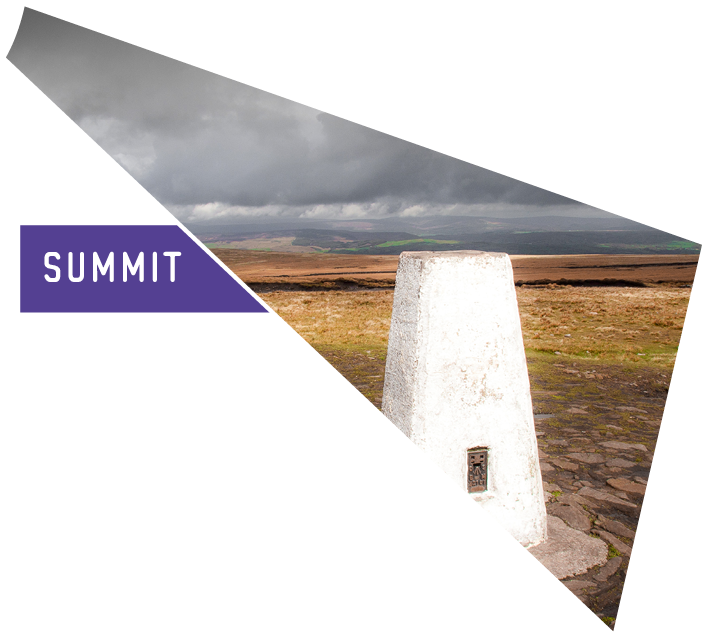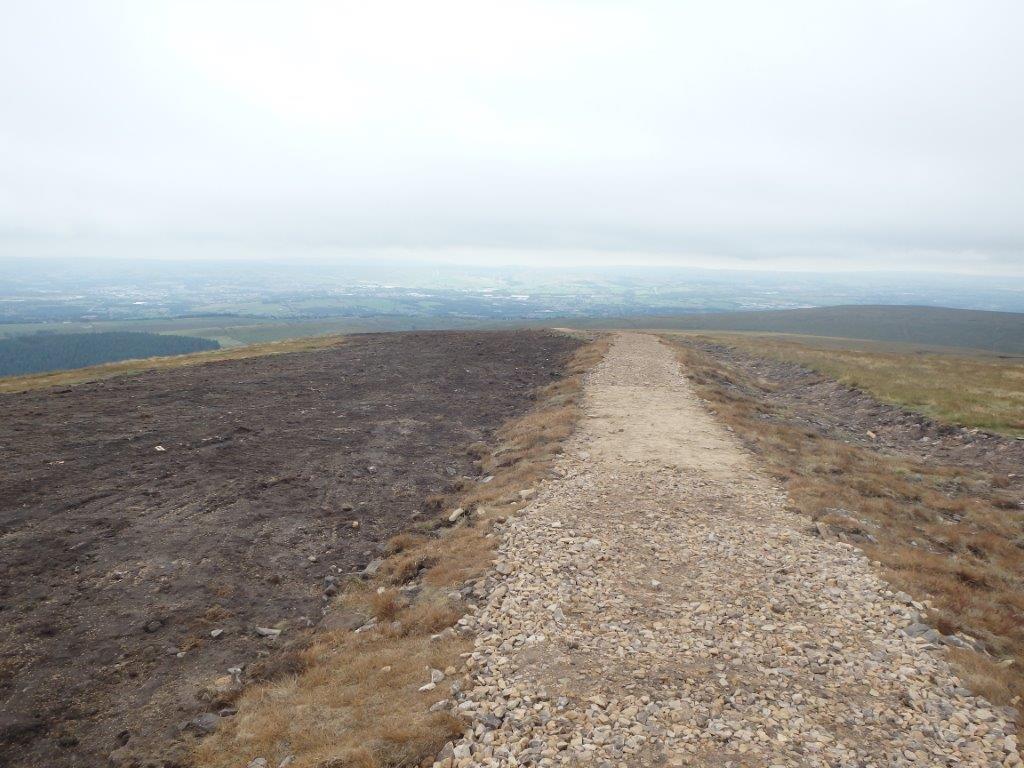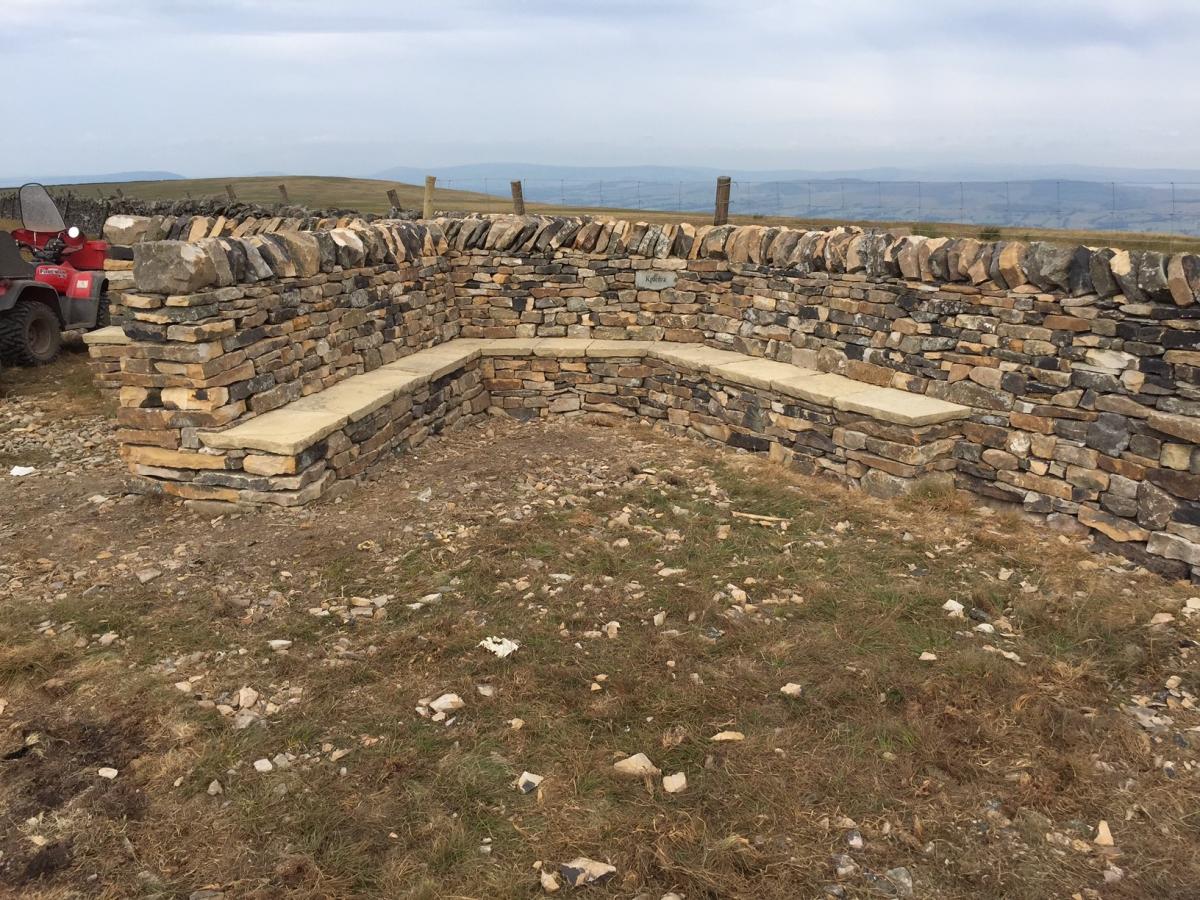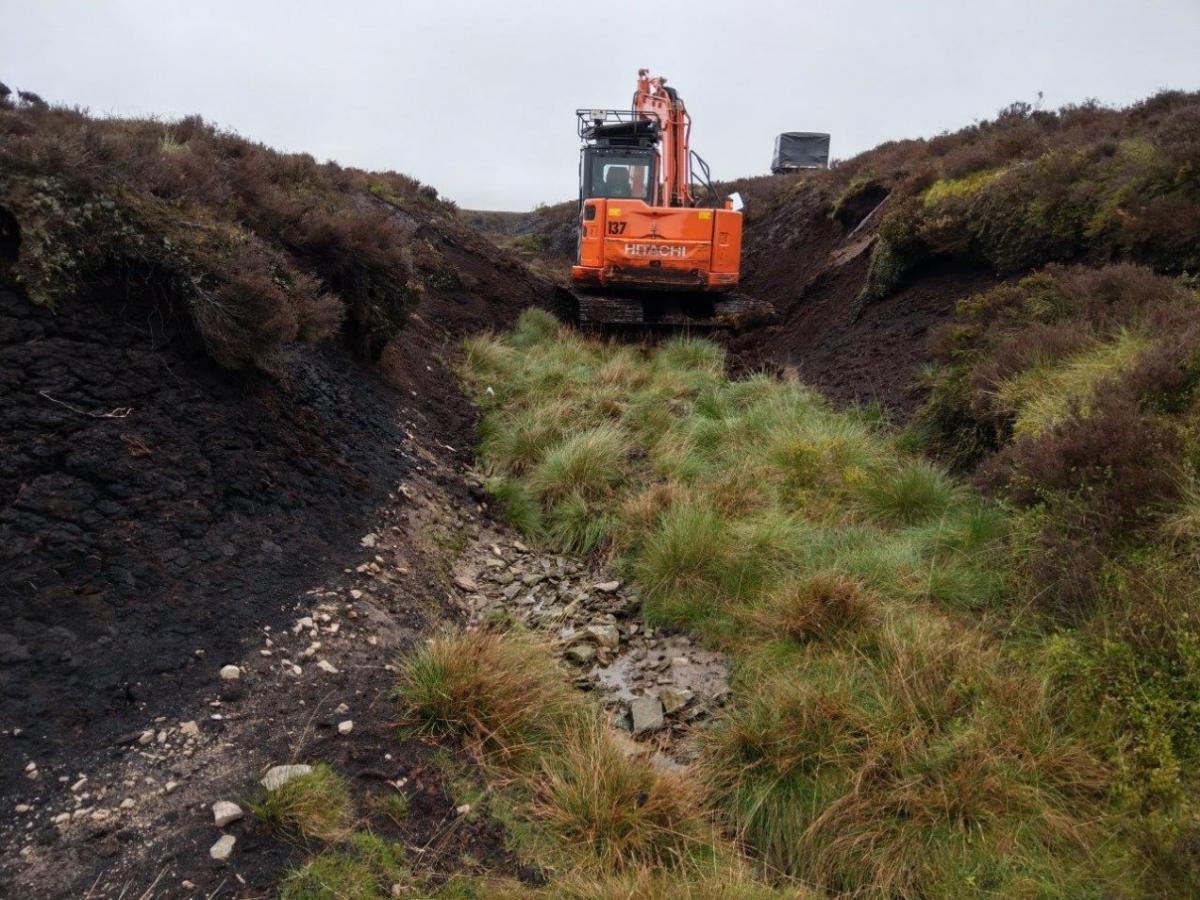
The Summit project consisted of three main elements which together improved the popular Pendle Hill for walkers, and for wildlife and climate.
Path Restoration

Contractors Conservefor began restoring 2600m of footpath in June 2018.
Using a combination of techniques, the well-worn paths have been re-profiled and rerouted to reduce the erosion scar on the summit plateau leading to the Trig point. The cart track route has been re-profiled and stone water bars have been installed to divert water running down the path and shedding it before it can damage the path more.
Along the full length of path restoration, moorland seed mix has been broadcast and has colonised what was bare ground.
Over the time of the project the hill experienced a massive increase in use, mostly attributable to the impacts of the covid pandemic. This together with the very visible impacts of climate crisis leading to patterns of drought and intense rainfall, have impacted on the paths and the peat.
 Since 2018 a number of resilience projects have been delivered by other contractors to keep the new paths in good condition by improving drainage and the surface. Volunteers also regularly cleared the water bars to reduce erosion. New flags were laid at the bottom of the steps and several re surfaced sections of path now link the hill back to Barley. Gates and stiles across the hill have also been restored and six new stone way-markers were installed to aid navigation.
Since 2018 a number of resilience projects have been delivered by other contractors to keep the new paths in good condition by improving drainage and the surface. Volunteers also regularly cleared the water bars to reduce erosion. New flags were laid at the bottom of the steps and several re surfaced sections of path now link the hill back to Barley. Gates and stiles across the hill have also been restored and six new stone way-markers were installed to aid navigation.
Summit Stones
As part of the Pendle Hill Summit project an artist, Henrietta Armstrong, was commissioned to undertake work to create a contemporary 'Panorama' feature to celebrate the views from the trig point and stories of the hill in a permanent yet unobtrusive artwork.
The Summit Stones now provide a talking point to walkers reaching the summit trig point.
 Summit Shelter
Summit Shelter
A dry stone wall Shelter built by a master craftsman, Phil Dolphin from the Dry Stone Walling Association was built into the boundary wall between Downham and Barley, incorporating two step stiles. This now provides a welcome resting point for walkers.
The old ladder stile crossing the wall has been replaced by a new kissing gate and field gate allowing much easier access from one side of the hill to the other.
Peat Restoration
When we started work on the Summit there were large areas of bare and eroding peat on the summit of the hill, as well as deep and actively eroding gullies leading down across Barley Moor.
During the first year of the project, our contractors Conservefor undertook the  following:
following:
- Re-profiling the edges of the peat hags and the gullies to reduce peat erosion
- Installing coir logs to slow the flow of water
- Covering the bare peat with heather brash cut from the hill to encourage re-vegetation
- Seeding with upland grasses and bog forming sphagnum mosses
- Planting cotton grass plug plants to help start the revegetation process.
Unfortunately, severe storms in early 2020 tore through some of the dams and these had to be re-engineered and added to in later years. We also supported work led by Ribble Rivers Trust on the Mearley Moor area of the hill in 2020/21 to restore more bare peat and to improve the path so walkers and runners could keep off this fragile habitat.
In total 18 hectares of peat was restored for wildlife, climate and flood management. Volunteers helped with plug planting and re-seeding the newly profiled areas and they will also continue monitoring the area in conjunction with the Forest of Bowland peatlands project.
 This work on Pendle works as a brilliant 'shop window' for peat restoration techniques and as an educational resource about why peat is so important. This was enhanced by the 'Peat Freaks' audio trail and the artist residency by Kerry Morrison who developed the Pendle Peat pie . We also held an In Conversation between environmental artist Kerry Morrison and ecologist Sarah Robinson which explored how artists and scientists can collaborate, you can watch 'In Conversation: Kerry Morrison and Sarah Robinson are in deep peat' film here.
This work on Pendle works as a brilliant 'shop window' for peat restoration techniques and as an educational resource about why peat is so important. This was enhanced by the 'Peat Freaks' audio trail and the artist residency by Kerry Morrison who developed the Pendle Peat pie . We also held an In Conversation between environmental artist Kerry Morrison and ecologist Sarah Robinson which explored how artists and scientists can collaborate, you can watch 'In Conversation: Kerry Morrison and Sarah Robinson are in deep peat' film here.
You can view the Summit project image highlights here, and View our Summit Restoration Film below
This project was part funded by the European Agricultural Fund for Rural Development: Europe investing in rural areas
